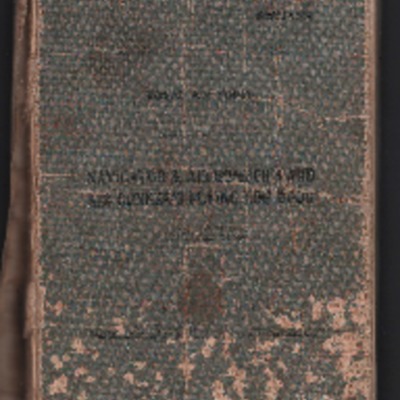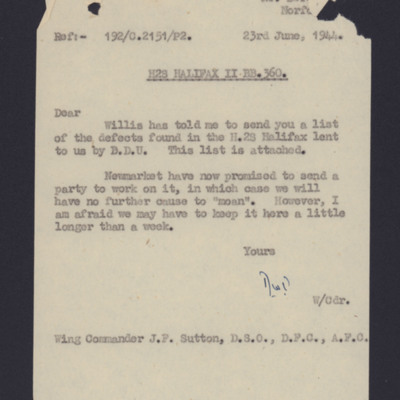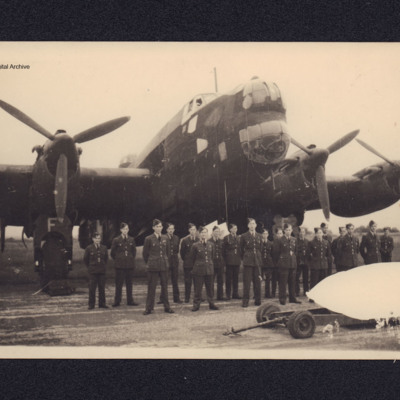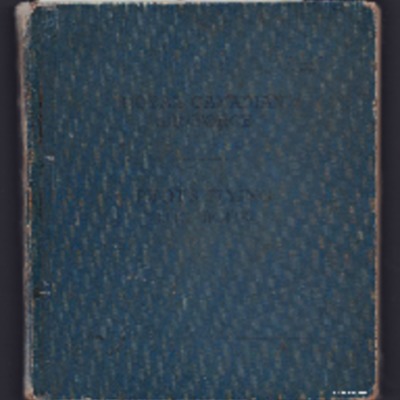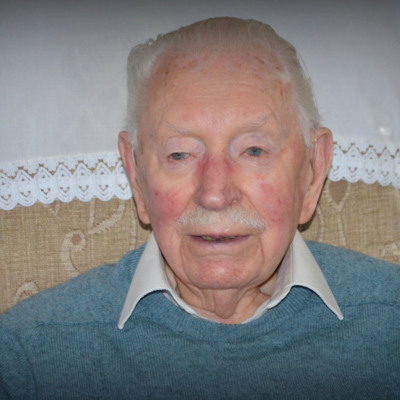Browse Items (165 total)
- Tags: Halifax Mk 2
Die Kriegsflugzeuge der Feindmächte
Tags: B-17; B-24; B-25; Beaufighter; Blenheim; Boston; Catalina; Defiant; fuelling; Halifax; Halifax Mk 1; Halifax Mk 2; Hampden; Hudson; Hurricane; Lancaster; Lysander; Manchester; Mosquito; P-38; P-40; P-51; Spitfire; Stirling; Sunderland; Swordfish; Ventura; Walrus; Wellington; Whitley
Was it all a Dream
Tags: 1 Group; 103 Squadron; 166 Squadron; 1660 HCU; 1667 HCU; 4 Group; 5 Group; 576 Squadron; 8 Group; 83 OTU; Advanced Flying Unit; Air Observers School; aircrew; Anson; B-17; Bolingbroke; bomb aimer; bombing; Bombing and Gunnery School; briefing; Distinguished Flying Cross; flight engineer; Gee; ground personnel; H2S; Halifax; Halifax Mk 2; Halifax Mk 3; Halifax Mk 5; Heavy Conversion Unit; Initial Training Wing; intelligence officer; lack of moral fibre; Lancaster; Lancaster Finishing School; Lincoln; Lysander; Master Bomber; medical officer; memorial; mid-air collision; military living conditions; military service conditions; mine laying; Mosquito; Oboe; Operational Training Unit; Pathfinders; perception of bombing war; prisoner of war; promotion; RAF Acaster Malbis; RAF Bicester; RAF Binbrook; RAF Blyton; RAF Brampton; RAF Cosford; RAF Elsham Wolds; RAF Hawarden; RAF Hemswell; RAF Kimbolton; RAF Kirmington; RAF Llandwrog; RAF Lossiemouth; RAF Moreton in the Marsh; RAF Paignton; RAF Penrhos; RAF Peplow; RAF Sandtoft; RAF Scampton; RAF St Athan; RAF Swinderby; RAF Worksop; RAF Wyton; Scarecrow; searchlight; superstition; Tiger force; training; Wellington; Women’s Auxiliary Air Force
Robert McClement's Flying Log Book for Navigators, Air Bombers, Air Gunners, Flight Engineers
Tags: 10 Squadron; 1658 HCU; 20 OTU; air gunner; Air Gunnery School; aircrew; Anson; bombing; bombing of Luftwaffe night-fighter airfields (15 August 1944); FIDO; Halifax; Halifax Mk 2; Halifax Mk 3; Heavy Conversion Unit; Normandy campaign (6 June – 21 August 1944); Operation Manna (29 Apr – 8 May 1945); Operational Training Unit; RAF Lossiemouth; RAF Melbourne; RAF Pembrey; RAF Riccall; tactical support for Normandy troops; training; V-1; V-weapon; Wellington
Interview with William Hubert Allen
Tags: 10 OTU; 102 Squadron; 1658 HCU; 76 Squadron; 77 Squadron; aircrew; Anson; Cook’s tour; Dominie; Halifax; Halifax Mk 1; Halifax Mk 2; Halifax Mk 3; Heavy Conversion Unit; mid-air collision; mine laying; Operational Training Unit; RAF Abingdon; RAF Holme-on-Spalding Moor; RAF Pocklington; RAF Riccall; RAF Yatesbury; training; Whitley; wireless operator
Interview with Doug Beasley
Tags: 1652 HCU; 76 Squadron; air sea rescue; aircrew; bombing; crewing up; flight engineer; ground crew; Halifax; Halifax Mk 2; Halifax Mk 3; Halifax Mk 5; Heavy Conversion Unit; Initial Training Wing; Ju 88; Lancaster; McIndoe, Archibald (1900-1960); Operational Training Unit; perception of bombing war; propaganda; RAF Holme-on-Spalding Moor; RAF Marston Moor; RAF St Athan; RAF Torquay; training; V-1; V-weapon; Wellington
Interview with Ronald Charles Davis
Interview with James Hampton
Interview with Janet Hughes. Two
Interview with Harry Hughes
Tags: 102 Squadron; 3 Group; 6 Group; 692 Squadron; 8 Group; aircrew; Anson; Bennett, Donald Clifford Tyndall (1910-1986); bomb struck; bombing; bombing of Dresden (13 - 15 February 1945); bombing of Hamburg (24-31 July 1943); briefing; Distinguished Flying Cross; Distinguished Flying Medal; faith; Fw 190; Gee; ground personnel; Halifax; Halifax Mk 1; Halifax Mk 2; Harris, Arthur Travers (1892-1984); incendiary device; intelligence officer; Ju 88; Me 109; Me 110; Me 262; medical officer; meteorological officer; military service conditions; Mosquito; navigator; Operational Training Unit; Pathfinders; perception of bombing war; Portal, Charles (1893-1971); promotion; RAF Chedburgh; RAF Harwell; RAF Riccall; RAF Wombleton; RCAF Rivers; Stirling; training; Wellington; Window
Interview with Stan Instone
Tags: 1664 HCU; 419 Squadron; Absent Without Leave; aircrew; anti-aircraft fire; Dulag Luft; final resting place; flight engineer; ground crew; ground personnel; Halifax; Halifax Mk 2; Halifax Mk 3; Halifax Mk 5; Heavy Conversion Unit; Initial Training Wing; Lancaster; military ethos; military service conditions; perception of bombing war; prisoner of war; RAF Middleton St George; RAF St Athan; Red Cross; sanitation; shot down; strafing; the long march; training
David Joseph's Pilot's flying log book
Interview with Arthur Nicholson
Tags: 51 Squadron; aircrew; bale out; bombing; C-47; crewing up; Dulag Luft; flight engineer; Halifax; Halifax Mk 2; Heavy Conversion Unit; military service conditions; Operation Exodus (1945); prisoner of war; RAF Bridlington; RAF Riccall; RAF Snaith; RAF St Athan; RAF Usworth; sanitation; shot down; training
Interview with Cyril Peters
Tags: 4 BFTS; 77 Squadron; Advanced Flying Unit; aircrew; British Flying Training School Program; Distinguished Flying Cross; Flying Training School; Halifax; Halifax Mk 2; Halifax Mk 3; Halifax Mk 5; Harvard; Initial Training Wing; military service conditions; Oxford; pilot; RAF Ansty; RAF Elvington; RAF Full Sutton; RAF Manston; RAF Marston Moor; Tiger Moth; training; Whitley
Interview with Arthur Vickers
Interview with Archie Weir
David Philip Storey's operations
This item was provided, in digital form, by a…
Tags: 158 Squadron; 51 Squadron; aircrew; anti-aircraft fire; bombing; bombing of Hamburg (24-31 July 1943); bombing of Kassel (22/23 October 1943); Bombing of Peenemünde (17/18 August 1943); fear; Gee; Halifax; Halifax Mk 2; Halifax Mk 3; Heavy Conversion Unit; Me 109; navigator; Operational Training Unit; Pathfinders; radar; RAF Abingdon; RAF Kinloss; RAF Lissett; RAF Pocklington; RAF Rufforth; RAF Snaith; RAF Worksop; training; V-1; V-2; V-weapon; Wellington; Window; wireless operator
192 Squadron radio countermeasures operations
Walter John Smith’s navigator’s, air bomber’s and air gunner’s flying log book
Tags: 12 Squadron; 1656 HCU; 1661 HCU; 27 OTU; 463 Squadron; aircrew; bombing; bombing of Hamburg (24-31 July 1943); Bombing of Peenemünde (17/18 August 1943); Bombing of Trossy St Maximin (3 August 1944); flight engineer; Halifax; Halifax Mk 2; Heavy Conversion Unit; Lancaster; Lancaster Finishing School; Lancaster Mk 1; Lancaster Mk 3; Normandy campaign (6 June – 21 August 1944); Operational Training Unit; RAF Lichfield; RAF Lindholme; RAF Syerston; RAF Waddington; RAF Wickenby; RAF Winthorpe; Stirling; training
Letter from David Donaldson to Wing Commander J F Sutton
Tags: 192 Squadron; H2S; Halifax; Halifax Mk 2; RAF Foulsham
Halifax Mk 2 with ground crew
Nose art visible showing number of operations and character illustration.
Tags: dispersal; ground crew; ground personnel; Halifax; Halifax Mk 2; nose art
Halifax Mk 2 with aircrew and ground crew
Halifax Mk 2 with aircrew and ground crew
Tags: aircrew; ground crew; ground personnel; Halifax; Halifax Mk 2; observer; pilot
Jim Allen’s Royal Canadian Air Force pilots flying log book
Tags: 15 OTU; 1663 HCU; 20 OTU; 578 Squadron; Advanced Flying Unit; aircrew; Anson; bombing; bombing of Luftwaffe night-fighter airfields (15 August 1944); bombing of the Pas de Calais V-1 sites (24/25 June 1944); Cook’s tour; Flying Training School; Halifax; Halifax Mk 2; Halifax Mk 3; Heavy Conversion Unit; Initial Training Wing; Normandy campaign (6 June – 21 August 1944); Operational Training Unit; Oxford; pilot; RAF Banff; RAF Bassingbourn; RAF Burn; RAF Harwell; RAF Hullavington; RAF Leconfield; RAF Lossiemouth; RAF Paignton; RAF Rufforth; RAF Stoney Cross; RAF Stradishall; RAF Wratting Common; RCAF Estevan; Stirling; tactical support for Normandy troops; Tiger Moth; training; V-1; V-3; V-weapon; Wellington; York

![MMolloyS[Ser#-DoB]-160212-01.pdf MMolloyS[Ser#-DoB]-160212-01.pdf](https://ibccdigitalarchive.lincoln.ac.uk/omeka/files/square_thumbnails/971/10025/MMolloyS[Ser -DoB]-160212-01.jpg)
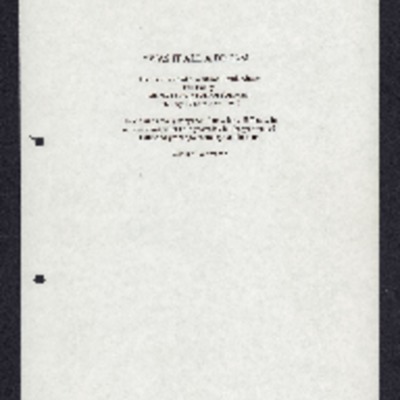



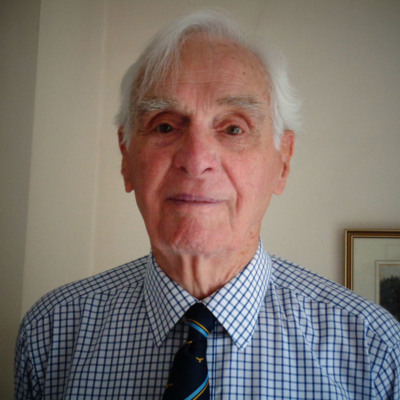

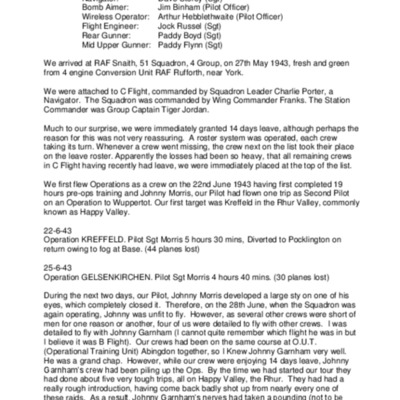
![MGrundyAF[DoB]-150610-090001.jpg MGrundyAF[DoB]-150610-090001.jpg](https://ibccdigitalarchive.lincoln.ac.uk/omeka/files/square_thumbnails/1213/15134/MGrundyAF[DoB]-150610-090001.jpg)
